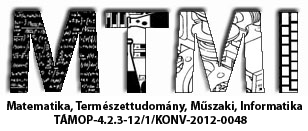Actual and wanted body image and body size in a disadvantaged population
Előadás adatai
Body image refers to a person's perception of his or her own physical appearance that may be dramatically different from one's objective physical condition or how one is actually perceived by others. This is an important aspect of self-worth and mental health across the life span.
A health examination survey took place in 2009 during a village health day organized by the local Roma Self-Government. All adults above the age of 18 years were invited to fill a questionnaire that contained items on perceived health, as well as how they perceived their own body weight, height, waist circumference, and whether they were aware of high blood pressure or diabetes. Body image was quantified by the Fallon-Rozin scale. Awareness of the relationship between waist circumference and cardiovascular diseases, and attempts to lose weight for health purposes or for beauty were also inquired about. Body weight, height and waist circumference were measured by a health worker, and advice tailored for the person according to the measurements was given by a health promotion specialist. Questionnaires were manually entered into and analyzed by Microsoft Excel.
82 individuals (55% males, mean age 42 years) were assessed; 71% had started or completed primary education. 30% perceived their health to be good or very good, and 67% indicated they could do much to improve their health. 28% said they had tried losing weight to improve their health. Body mass index (BMI) using the parameters assessed by participants was significantly higher than the BMI based on parameters measured by the health worker (p<0.000). However, only 31% of those with BMI’s above 24.9 tried to lose weight. Perceived waist circumference was significantly higher, by 23.73 cm, than that measured (p<0.000). The mean of the desired body shape was significantly lower than the mean of the actual one (p<0.000). Systolic blood pressure was strongly related to both body mass index and waist circumference.
Perceived body size and shape in this group of rural population with low education was significantly unfavorably different from either that measured by professionals or desired by the individuals themselves.
Támogatók: Támogatók: Az NTP-TDK-14-0007 számú, A Debreceni Egyetem ÁOK TDK tevékenység népszerűsítése helyi konferencia keretében, az NTP-TDK-14-0006 számú, A Debreceni Egyetem Népegészségügyi Karán folyó Tudományos Diákköri kutatások támogatása, NTP-HHTDK-15-0011-es A Debreceni Egyetem ÁOK TDK tevékenység népszerűsítése 2016. évi helyi konferencia keretében, valamint a NTP-HHTDK-15-0057-es számú, A Debreceni Egyetem Népegészségügyi Karán folyó Tudományos Diákköri kutatások támogatása című pályázatokhoz kapcsolódóan az Emberi Erőforrás Támogatáskezelő, az Emberi Erőforrások Minisztériuma, az Oktatáskutató és Fejlesztő Intézet és a Nemzeti Tehetség Program



